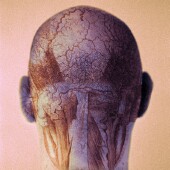- Double Mastectomy May Offer No Survival Benefit to Women With Breast Cancer
- Toxic Lead Found in Cinnamon Product, FDA Says
- Certain Abbott Blood Sugar Monitors May Give Incorrect Readings
- Athletes Can Expect High Ozone, Pollen Counts for Paris Olympics
- Fake Oxycontin Pills Widespread and Potentially Deadly: Report
- Shingles Vaccine Could Lower Dementia Risk
- Your Odds for Accidental Gun Death Rise Greatly in Certain States
- Kids From Poorer Families Less Likely to Survive Cancer
- Tough Workouts Won’t Trigger Cardiac Arrest in Folks With Long QT Syndrome
- At-Home Colon Cancer Test Can Save Lives
Ecstasy Use Tied to Rare Spinal Blood Vessel Problem in Teen


A teen who took the street drug called “ecstasy” suffered a potentially deadly bulge in his spinal cord artery, doctors said.
This condition — called a posterior spinal artery aneurysm — occurs when the artery wall weakens and bulges. If the aneurysm bursts, it can cause serious damage or death. Only 12 cases of spinal artery aneurysm have been reported, but all of them resulted in bleeding that affected the function of the spinal cord.
This is the first reported case of posterior spinal artery aneurysm linked to recreational drug use, Dr. Dileep Yavagal, of the department of neurology and neurosurgery at the University of Miami, and colleagues said. They noted that ecstasy has previously been linked to serious problems such as stroke, inflammation of the arteries in the brain, and brain bleeding.
Ecstasy can cause a sudden spike in blood pressure and increase the risk of rupture in existing aneurysms or other arterial abnormalities, the doctors warned.
In the new case study, published online July 3 in the Journal of NeuroInterventional Surgery, doctors describe the case of a healthy teenage boy who had taken ecstasy. The morning after he took the drug, the teen woke up with a headache, neck pain and muscle spasms.
A week later, his symptoms worsened and were accompanied by nausea, prompting the teen to go to a hospital emergency department. After the teen was transferred to a specialized surgical unit, doctors discovered he had an aneurysm on the left side of his spinal cord artery at the back of the neck.
Surgeons were able to remove the aneurysm and the weakened section of the spinal cord artery. The teen made a full recovery and had no lasting nerve damage, the study authors noted in a journal news release.
More information
The U.S. National Library of Medicine has more about aneurysms.
Source: HealthDay
Copyright © 2024 HealthDay. All rights reserved.










